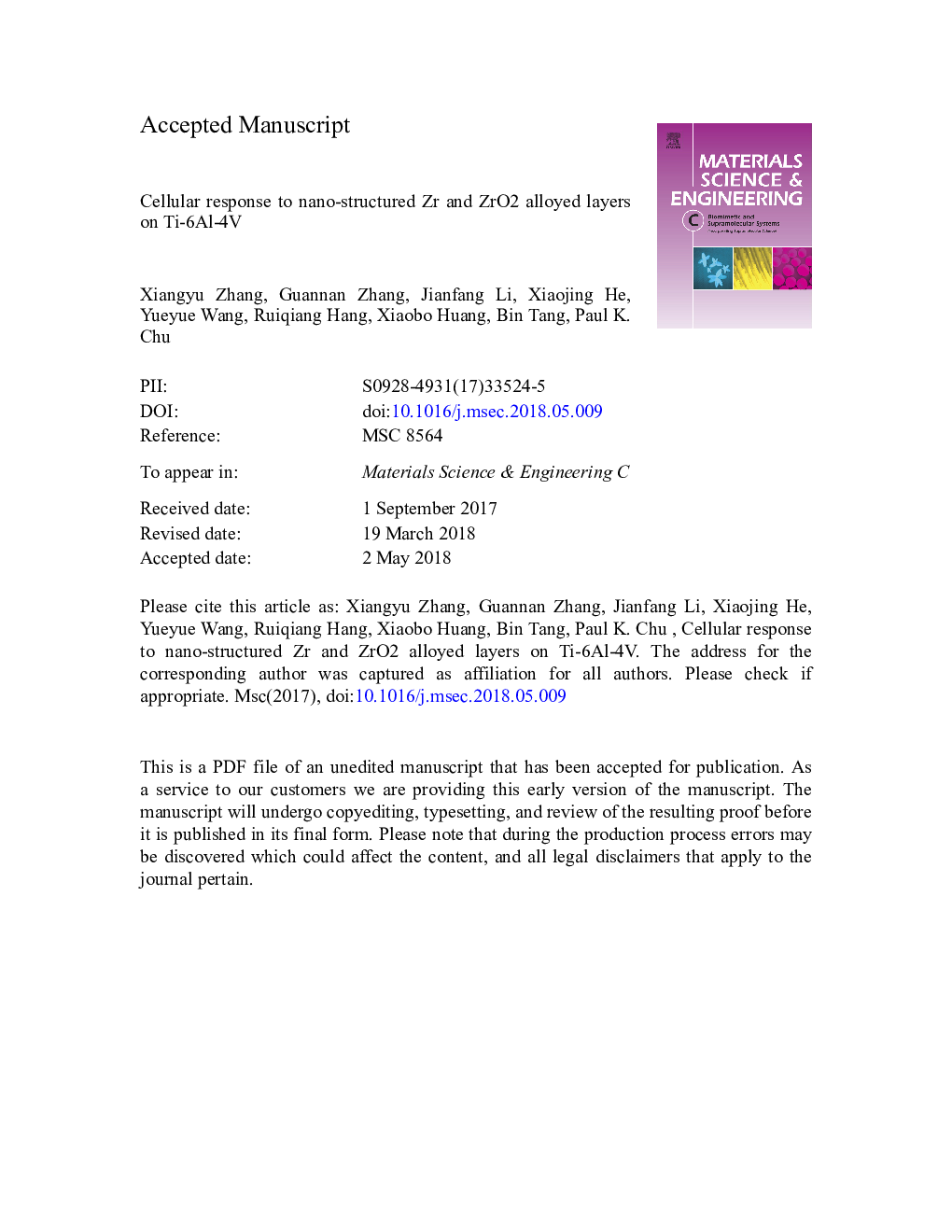| Article ID | Journal | Published Year | Pages | File Type |
|---|---|---|---|---|
| 7866163 | Materials Science and Engineering: C | 2018 | 30 Pages |
Abstract
The surface topography of biomaterials is known to influence cellular response such as adhesion, spreading and differentiation. In this work, the behavior of osteoblasts and endothelial cells on nano-structured Zr and micro/nano-structured ZrO2 alloyed layers of Ti-6Al-4V (TC4) was investigated. Zr alloyed layer (Zr@TC4) decreases the hydrophilicity whereas ZrO2 alloyed layers (ZrO2@TC4) is more hydrophilic than TC4 and more proteins adsorb on ZrO2@TC4 followed by Zr@TC4. The cells proliferate steadily on the smooth TC4 and nano-structured Zr@TC4 surfaces and the osteoblast activity is more pronounced on Zr@TC4 than TC4. The micro/nano-structured surface on ZrO2@TC4 restricts cellular adhesion and spreading independent of the surface wettability and protein adsorption. The findings provide insights into the design of micro/nano-structured biomaterials and interfaces with controlled tissue response.
Related Topics
Physical Sciences and Engineering
Materials Science
Biomaterials
Authors
Xiangyu Zhang, Guannan Zhang, Jianfang Li, Xiaojing He, Yueyue Wang, Ruiqiang Hang, Xiaobo Huang, Bin Tang, Paul K. Chu,
